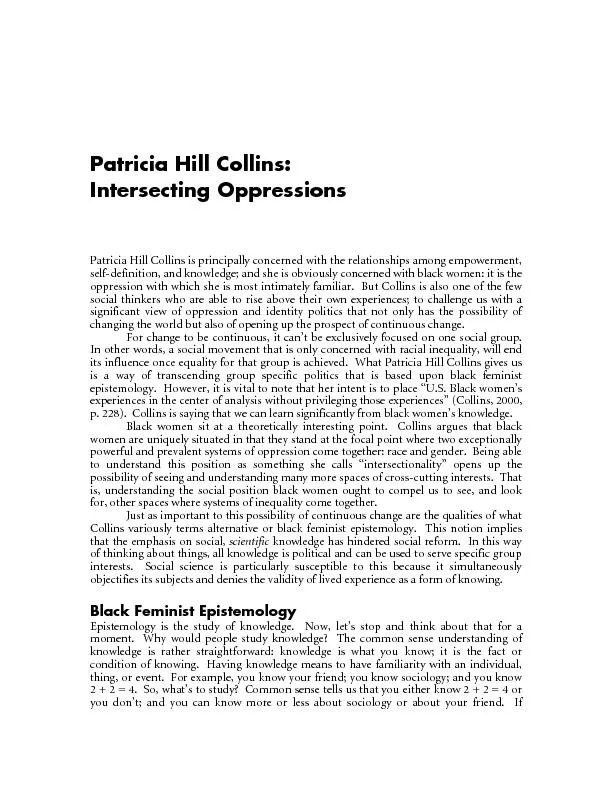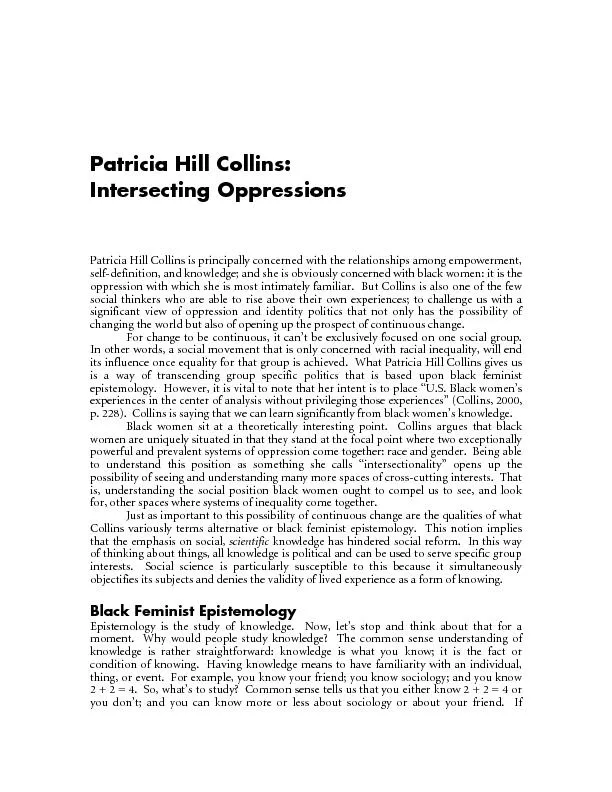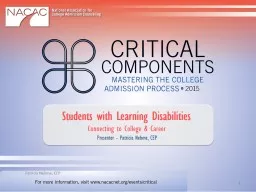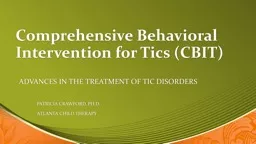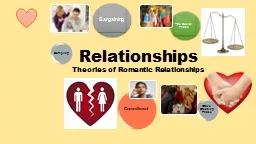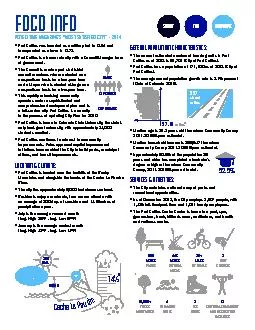PDF-Patricia Hill Collins is principally concerned with the relationships
Author : pamella-moone | Published Date : 2016-06-16
PATRICIA HILL COLLINS First according to the positivistic approach true or correct knowledge only comes when the observer separates him or her self from that which
Presentation Embed Code
Download Presentation
Download Presentation The PPT/PDF document "Patricia Hill Collins is principally con..." is the property of its rightful owner. Permission is granted to download and print the materials on this website for personal, non-commercial use only, and to display it on your personal computer provided you do not modify the materials and that you retain all copyright notices contained in the materials. By downloading content from our website, you accept the terms of this agreement.
Patricia Hill Collins is principally concerned with the relationships: Transcript
Download Rules Of Document
"Patricia Hill Collins is principally concerned with the relationships"The content belongs to its owner. You may download and print it for personal use, without modification, and keep all copyright notices. By downloading, you agree to these terms.
Related Documents

